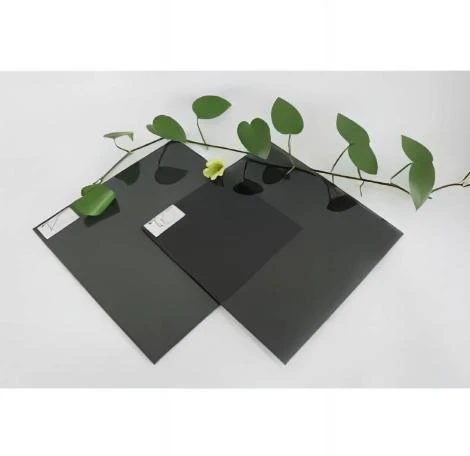The Dynamics of Low Iron Glass Pricing
Low iron glass, known for its exceptional clarity and low greenish tint, has gained significant traction in various industries, including architecture, automotive, and solar technology. As the demand for high-quality glass increases, so does the complexity of its pricing. Understanding the factors influencing the price of low iron glass can provide valuable insights for manufacturers, buyers, and investors alike.
What is Low Iron Glass?
Low iron glass is a type of clear glass that has a reduced iron content compared to standard glass. This reduction is critical because the presence of iron typically imparts a greenish tint to glass, diminishing its clarity and aesthetic appeal. Low iron glass, on the other hand, offers superior transmission of light, making it an attractive choice for applications requiring high visibility and optical quality. Common uses include display cases, solar panels, and high-end architectural projects.
Factors Influencing the Price
1. Raw Material Costs The primary ingredients in the production of low iron glass include silica sand, soda ash, and various additives. Fluctuations in the prices of these raw materials can significantly affect the cost of producing low iron glass. For instance, if the prices of silica sand increase due to scarcity or supply chain disruptions, manufacturers will likely pass on these increased costs to consumers.
2. Manufacturing Processes Producing low iron glass requires more precise control during manufacturing than standard glass. The processes involve more refined raw materials and meticulous production techniques to ensure minimal impurities. This heightened complexity can drive up production costs and, consequently, the final price of the glass.
3. Energy Costs The glass manufacturing industry is energy-intensive, relying heavily on fossil fuels and electricity. Sudden increases in energy prices due to geopolitical tensions, natural disasters, or changes in regulatory policies can lead to higher production costs, which again will affect the price of low iron glass.
low iron glass price
4. Market Demand The demand for low iron glass is closely tied to broader market conditions. For example, the construction and automotive industries are catalysts for demand. A booming construction industry or a surge in solar energy adoption will likely lead to increased demand for low iron glass, pushing its price upward. Conversely, during economic downturns, demand may wane, leading to price decreases.
5. Technological Advancements Innovations in glass manufacturing technologies can also influence pricing. Newer, more efficient production techniques can lower costs, while advanced coatings and treatments can add value but also increase prices. The introduction of recycled materials into the production process is another factor; while it can reduce costs, the quality and transparency of low iron glass must be considered.
6. Geopolitical Factors The global nature of the glass industry means that geopolitical factors can have a significant impact. Trade policies, tariffs, and international relations can influence the availability and cost of raw materials. For example, if a major supplying nation faces political instability, resulting in supply chain disruptions, prices for low iron glass could spike due to scarcity.
Future Trends
As sustainability becomes increasingly important, there is a growing interest in recyclable low iron glass, which could create a new market segment and potentially moderate prices through more sustainable practices. Additionally, advancements in manufacturing technology may enhance cost-efficiency, potentially influencing the pricing landscape favorably for consumers.
Conclusion
The pricing of low iron glass is influenced by a multitude of factors ranging from raw material costs and manufacturing processes to market dynamics and geopolitical events. As industries continue to evolve and adapt, understanding these factors becomes crucial for stakeholders in the glass market. With increasing applications and a potential shift towards sustainability, the future of low iron glass pricing may reveal both challenges and opportunities for innovation and growth.
 Afrikaans
Afrikaans  Albanian
Albanian  Amharic
Amharic  Arabic
Arabic  Armenian
Armenian  Azerbaijani
Azerbaijani  Basque
Basque  Belarusian
Belarusian  Bengali
Bengali  Bosnian
Bosnian  Bulgarian
Bulgarian  Catalan
Catalan  Cebuano
Cebuano  Corsican
Corsican  Croatian
Croatian  Czech
Czech  Danish
Danish  Dutch
Dutch  English
English  Esperanto
Esperanto  Estonian
Estonian  Finnish
Finnish  French
French  Frisian
Frisian  Galician
Galician  Georgian
Georgian  German
German  Greek
Greek  Gujarati
Gujarati  Haitian Creole
Haitian Creole  hausa
hausa  hawaiian
hawaiian  Hebrew
Hebrew  Hindi
Hindi  Miao
Miao  Hungarian
Hungarian  Icelandic
Icelandic  igbo
igbo  Indonesian
Indonesian  irish
irish  Italian
Italian  Japanese
Japanese  Javanese
Javanese  Kannada
Kannada  kazakh
kazakh  Khmer
Khmer  Rwandese
Rwandese  Korean
Korean  Kurdish
Kurdish  Kyrgyz
Kyrgyz  Lao
Lao  Latin
Latin  Latvian
Latvian  Lithuanian
Lithuanian  Luxembourgish
Luxembourgish  Macedonian
Macedonian  Malgashi
Malgashi  Malay
Malay  Malayalam
Malayalam  Maltese
Maltese  Maori
Maori  Marathi
Marathi  Mongolian
Mongolian  Myanmar
Myanmar  Nepali
Nepali  Norwegian
Norwegian  Norwegian
Norwegian  Occitan
Occitan  Pashto
Pashto  Persian
Persian  Polish
Polish  Portuguese
Portuguese  Punjabi
Punjabi  Romanian
Romanian  Russian
Russian  Samoan
Samoan  Scottish Gaelic
Scottish Gaelic  Serbian
Serbian  Sesotho
Sesotho  Shona
Shona  Sindhi
Sindhi  Sinhala
Sinhala  Slovak
Slovak  Slovenian
Slovenian  Somali
Somali  Spanish
Spanish  Sundanese
Sundanese  Swahili
Swahili  Swedish
Swedish  Tagalog
Tagalog  Tajik
Tajik  Tamil
Tamil  Tatar
Tatar  Telugu
Telugu  Thai
Thai  Turkish
Turkish  Turkmen
Turkmen  Ukrainian
Ukrainian  Urdu
Urdu  Uighur
Uighur  Uzbek
Uzbek  Vietnamese
Vietnamese  Welsh
Welsh  Bantu
Bantu  Yiddish
Yiddish  Yoruba
Yoruba  Zulu
Zulu 

